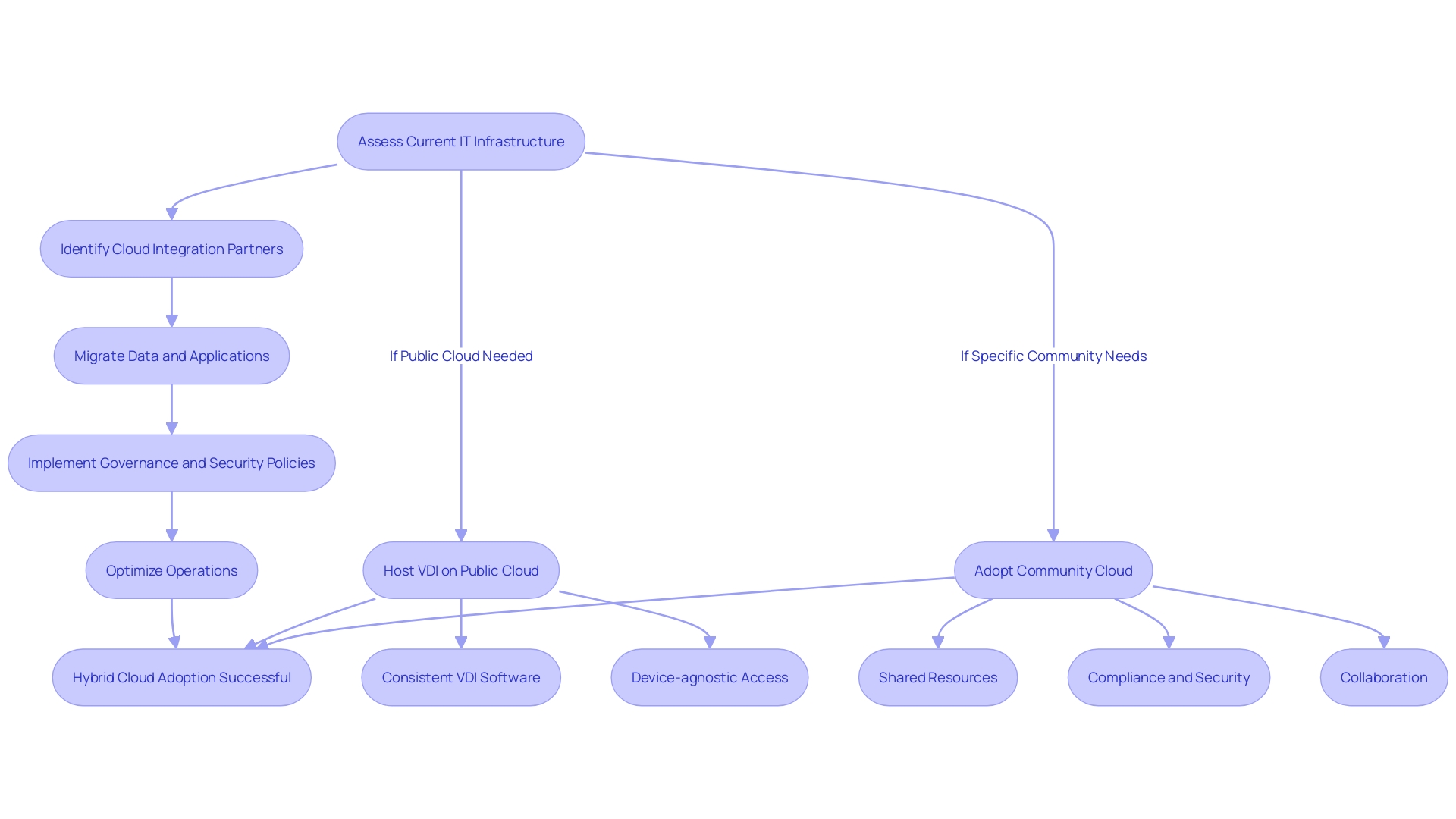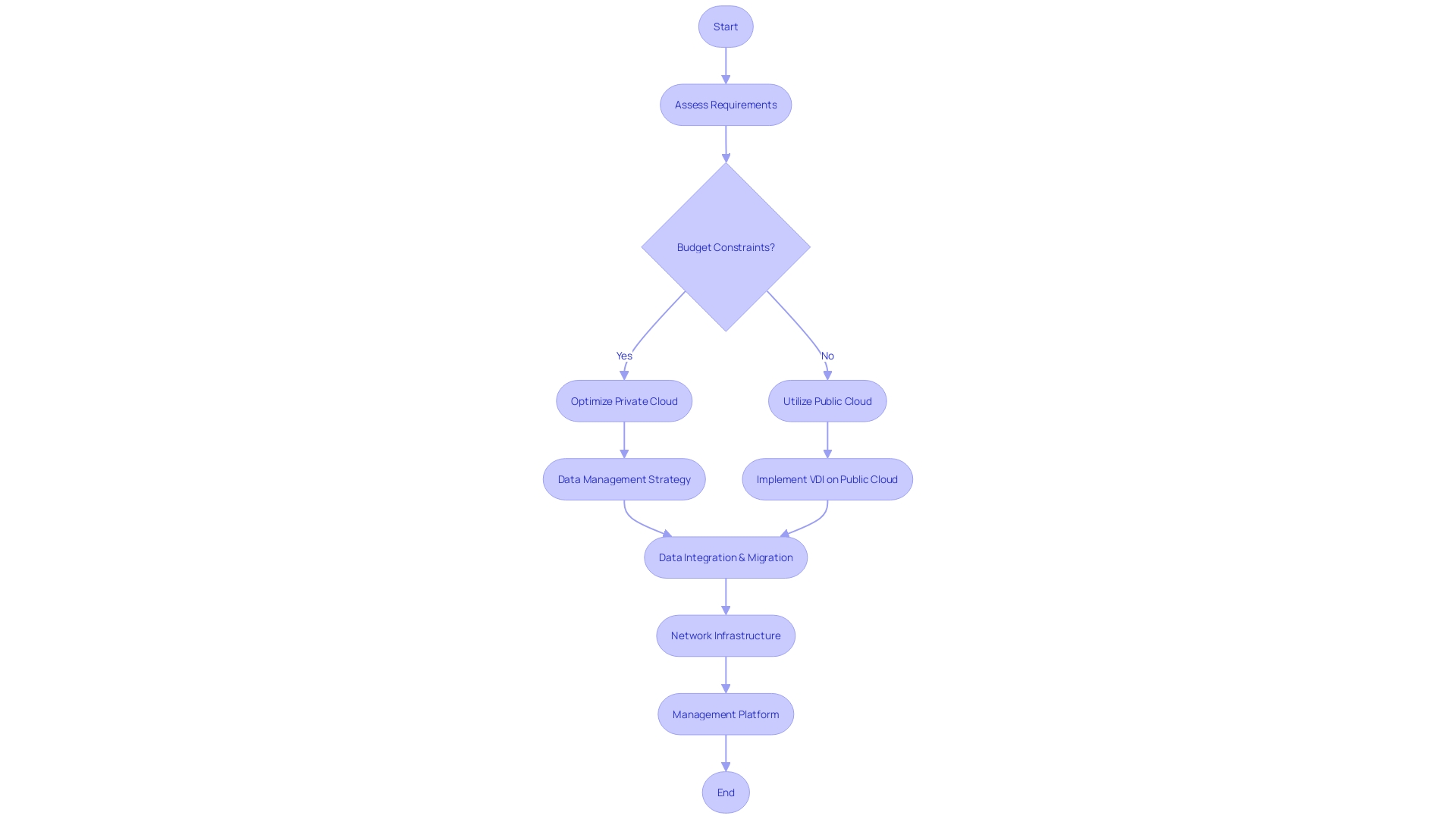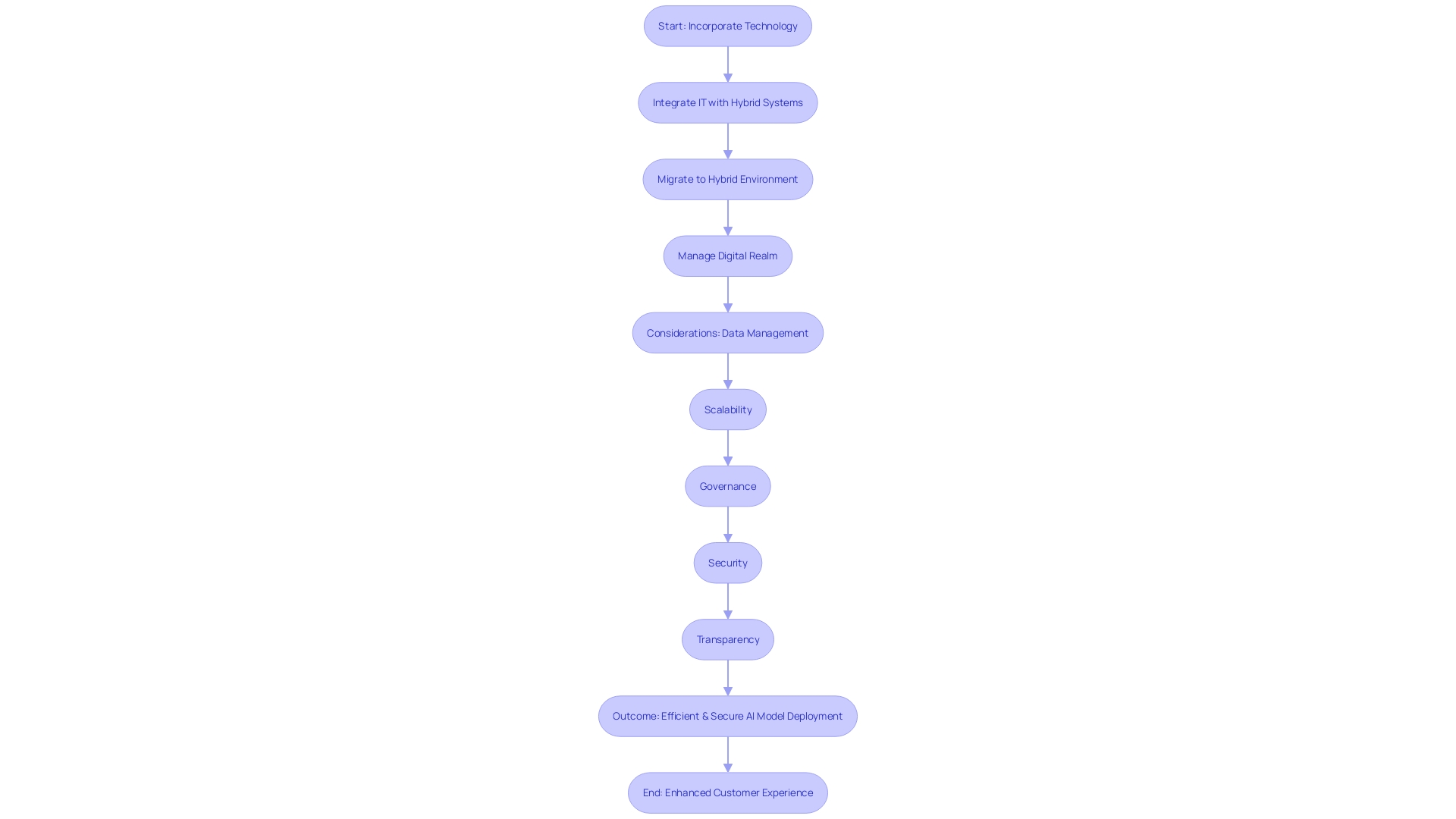Introduction
Hybrid cloud solutions have emerged as a powerful tool for organizations seeking to harness the benefits of both public and private clouds. By combining the scalability and efficiency of public clouds with the control and security of private clouds, businesses can achieve a seamless integration of disparate IT systems. This article explores the concept of Enterprise Hybrid Cloud, its benefits, key components, and the importance of specialized integration, migration, and management services.
As the need for a unified approach to managing distributed data and applications becomes increasingly clear, hybrid cloud solutions offer businesses an integrated and intuitive platform to leverage their data effectively and efficiently. With the support of expert services, organizations can navigate the complexities of the hybrid cloud landscape and ensure agility, security, and alignment with their business objectives.
What is Enterprise Hybrid Cloud?
Hybrid solutions represent a strategic convergence of private and public resources, enabling organizations to capitalize on the scalability and efficiency of public clouds while retaining control over their critical within a private framework. Ensuring seamless integration and management of disparate IT systems, whether based in traditional on-premises data centers or within the realm of cloud computing, is the commitment to uniform governance, security, and privacy policies that overarching this blend of environments.
Consider the experience of IFCO, which, despite a small IT department, successfully migrated by collaborating with Rackspace Technology. Rackspace provided extensive expertise and proactive alternative solutions, demonstrating the value of a knowledgeable partner in navigating the intricacies of cloud integration.
Chess.com, the leading online chess platform, is another instance of a combination of different computing environments in action. Managing more than ten million games daily and supporting a user base of over 150 million, Chess.com relies on a robust combination of public cloud services and on-premises solutions to deliver an uninterrupted and global gaming experience.
Similarly, a government agency managing a fleet of vehicles overcame the limitations of 19 legacy applications by transitioning to a combination cloud-based approach. This action brought together different systems, languages, and data sources, emphasizing the potential of the mixed computing environment to optimize operations and enhance effectiveness.
In the ever-changing landscape of digital transformation, companies are increasingly adopting combined cloud solutions to stay competitive. Announcement from Hewlett Packard Enterprise regarding the establishment of a fresh business unit that combines different technologies reinforces the industry's acknowledgement of this pattern.
Supporting the transition to mixed cloud models are statistics that indicate their economic impact. According to a report titled 'Analyzing the Economic Benefits of Infoblox Networking and Security Management in a Multi-cloud Environment,' users of Infoblox solutions saw an impressive 334% ROI, including a 75% increase in operational efficiency and a 79% reduction in operational costs.
These achievements are mirrored by Infosys, a frontrunner in digital services and consulting, which enables clients across 56 countries to embrace digital transformation driven by AI. The company's dedication to fostering an AI-first core and agile digital scalability is a testament to the power of hybrid cloud solutions in amplifying human potential and driving growth.
The need for a unified approach to managing the increasingly distributed nature of information and applications is clear. Scott Sinclair of Enterprise Strategy Group encapsulates the challenge: "Data is becoming more distributed. Applications are increasingly becoming more distributed... What you desire is something that can reside on top of this dispersed information ecosystem and display something that is user-friendly and coherent that I can utilize to harness the information in the most influential manner, the most advantageous manner to my enterprise Hybrid solutions are the solution to this need, providing an integrated, intuitive platform for businesses to leverage their data effectively and efficiently.

Benefits of Enterprise Hybrid Cloud
A hybrid strategy empowers organizations with the agility to scale their resources as needed, ensuring a dynamic response to demand fluctuations. By using a combination of public and private clouds, organizations can achieve substantial cost efficiencies while optimizing IT expenditure. The integration of these environments facilitates seamless workload transfer, crucial for maintaining efficiency in today's fast-paced business landscape.
In practice, companies like Lincoln Financial Group have demonstrated the profound impact of a combined cloud model. Their transition to a cloud-based architecture, guided by a multiprovider and multipartner strategy, underscores the importance of early collaboration across organizational boundaries. Security considerations remain paramount, with meticulous attention to legacy system nuances and adherence to contemporary security standards.
The economic implications of hybrid adoption are equally compelling. The 'Analyzing the Economic Benefits of Infoblox Networking and Security Management in a Multi-environment' report demonstrates an average ROI of 334% for users of Infoblox solutions, emphasizing the vital role of advanced management in driving business success. Organizations that thrive in the sky exhibit a convergence of network, security, and cloud operations into a unified center, enabling operational efficiencies and cost reductions.
The transformative potential of a combination of different technologies is further echoed in the statements of industry leaders. The adoption of a unified platform for IT operations, management, applications, data, and security, consolidates fragmented environments, offering key advantages such as faster market response and AI-driven efficiencies.
In the midst of these advancements, Hewlett Packard Enterprise's reorganization to establish a new unit that combines public and private computing, led by CTO Fidelma Russo, reflects the growing importance of the combination of different computing platforms in the corporate sphere. The strategic move aims to address the evolving requirements of customers seeking innovation across heterogeneous environments, marking a pivotal shift towards more integrated and adaptive models.
Key Components of Enterprise Hybrid Cloud
A comprehensive hybrid solution for enterprises encompasses both on-premise and internet-based technology to deliver a cohesive system that addresses a variety of business needs. At the heart of this system is the private atmosphere, which serves as a secure and controlled environment for hosting crucial applications and sensitive data, offering enhanced security and compliance. On the opposite side of the range, the general public extends scalable and cost-efficient resources, including storage and computing services, accessible over the internet and provided by third-party vendors.
To effectively handle these diverse resources, a management platform that combines different technologies is essential. It serves as the central hub for coordinating the hybrid environment, equipped with powerful tools for automation, workload optimization, and governance. This platform ensures that information and applications can seamlessly interact across both private and public cloud environments, maintaining the integrity and efficiency of business operations.
The connection between the two cloud environments is facilitated through a secure and resilient network infrastructure, which is crucial for the uninterrupted flow of information. In addition, data integration and migration tools are essential for the seamless transfer of data and applications between various computing environments.
For example, a practical implementation of this integrated method can be observed in the partnership between IFCO and Rackspace, where IFCO utilized Rackspace's knowledge to navigate its initial venture into computing technology. Likewise, the infrastructure expansion of Chess.com demonstrates the need for a reliable combination of on-premises and off-premises computing environments to serve its worldwide community of players and handle countless online chess matches each day.
The significance of such mixed cloud solutions is further underscored by the recent organizational restructuring at Hewlett Packard Enterprise (HPE), which introduced a dedicated combination cloud unit to meet the evolving needs of its customers. This action, in addition to the value provided by advanced practices for managing clouds as shown in a report on Infoblox solutions, which emphasizes an impressive 334% average return on investment, demonstrates the strategic significance of blended cloud environments. The coming together of network, security, and online operations into a unified operations center, as demonstrated by Infosys's client experiences, plays a crucial role in empowering businesses during their digital transformation journeys.
By integrating these diverse components, enterprises are well-equipped to meet the demands of today's dynamic and interconnected digital landscape, ensuring that their technology investments are both strategic and conducive to long-term innovation.

Integration, Migration, and Management Services
For businesses aiming to harness the full potential of a blended environment, it's crucial to tap into specialized integration, migration, and management services. These services are not just support systems but strategic partners guiding you through the complexities of the combined computing journey.
-
Integration Services: The integration of existing IT infrastructure with hybrid systems is a nuanced process that demands careful alignment of different technologies. By embracing a multiprovider, multipartner approach, organizations can enable smooth connectivity between their on-premises systems and the digital environment. As highlighted by Satyendra Kumar, embracing collaborative practices across organizational borders is paramount. This ensures not only compatibility but also the smooth transition of data and workloads, safeguarding the nuances of security both in legacy systems and other computing environments.
-
Migration Services: When it comes to migrating to the hybrid environment, the approach is as important as the execution. Choosing a reliable platform, like IFCO's collaboration with Rackspace Technology, can offer invaluable insights and experience. Enterprises like IFCO, with limited IT departments, benefit from a partner experienced in multiple customer engagements. The process involves minimizing downtime and optimizing performance while prioritizing applications based on business needs and sensitivity, blending automation with manual processes for a dynamic planning approach.
-
Management Services: Once in the digital realm, the management of the environment is an ongoing commitment to performance, security, and compliance. Services must encompass monitoring, troubleshooting, patching, and governance. As enterprise data and applications become increasingly distributed, as noted by Scott Sinclair from Enterprise Strategy Group, it's essential to have an overarching strategy that unifies disparate data and presents an intuitive and consistent management framework.
In brief, the strategic implementation of mixed cloud solutions through professional services guarantees that enterprises stay adaptable, protected, and in harmony with their business goals. The importance of these services cannot be overstated, as they are integral to navigating the complexities of the hybrid cloud landscape.

Conclusion
Hybrid cloud solutions integrate public and private clouds, combining scalability and efficiency with control and security. Enterprise Hybrid Cloud provides an integrated platform for effective data utilization.
Benefits of Enterprise Hybrid Cloud include dynamic resource scaling and cost efficiencies. Key components encompass private and public clouds managed through a hybrid cloud management platform. Connectivity and data integration tools ensure seamless interaction.
Specialized services for integration, migration, and management are crucial for successful implementation. Integration enables seamless connectivity, migration prioritizes business needs, and management ensures ongoing performance, security, and compliance.
In conclusion, hybrid cloud solutions, supported by expert services, offer agility, security, and alignment with objectives. The need for unified management of distributed data and applications is clear, and hybrid cloud provides an intuitive platform for efficient utilization.




